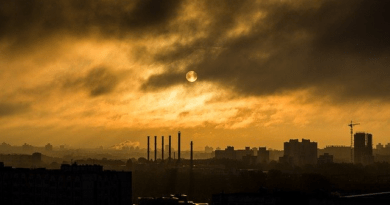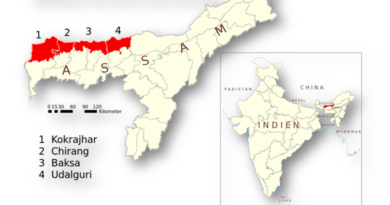Russia Ukraine Conflict
Context:
Recently, the US intelligence reports said the tension on the Russia Ukraine border represents a major security crisis for the region, with the potential to snowball into a broader conflict.
Russia Ukraine Conflict
The Russia Ukraine conflict is a major security crisis in the Eurasian region, with the potential to escalate into a much broader conflict. Geopolitically, it might lead to further deterioration of Russian relations with the US and Europe.
The Ukraine conflict in the heart of Europe may look distant to India. But it has far-reaching consequences not only for India’s relations with the US, the European Union, Russia, and China but also the larger dynamic of Asian geopolitics.
Ukraine and Russia share hundreds of years of cultural, linguistic and familial links, For many in Russia and in the ethnically Russian parts of Ukraine, the shared heritage of the countries is an emotional issue that has been exploited for electoral and military purposes. As part of the Soviet Union, Ukraine was the second-most powerful Soviet republic after Russia, and was crucial strategically, economically and culturally.
Origin of the Ukrainian Crisis
In a nutshell, the Ukrainian crisis is a power struggle between the various political factions in the Ukraine. Chief among these factions are the ones who seek to cultivate closer ties with the European Union while the other seeks better relations with Russia.
Ukraine was one of the founding states of the Soviet Union, its farmlands contributing immensely to the Union’s economic output from 1920 to 1991.
The crisis reached a boiling point when on November 21, 2013, Victor Yanukovych, the Ukrainian President, suspended an agreement with the European Union. It led to a series of protests from those who supported the agreement with the European Union. The subsequent Ukrainian Revolution unseated Yanukovych from his presidential post in February 2014.
This in turn led to a series of unrest in the eastern and southern regions of Ukraine, whose denizens were more supportive of Yanukovych and his pro-Russian policies. Soon a political crisis plunged Ukraine into chaos, with the Pro-European Union and Pro-Russian factions fighting it out against each other for control of Ukraine.
It was against this backdrop that Russia sent its army to annex the Crimean region of Ukraine in March 2014. Russia’s casus belli (an act or situation that provokes or justifies a war) was that it was protecting its port access on the Black Sea in case the political crisis in Ukraine caused disruption in its trade in the region.
Russia’s invasion further bolstered the pro-Russian forces in Ukraine, turning the simmering unrest into a full-blown war against the post-revolutionary Ukrainian government.
Between 2014–2018, the military conflict between Ukrainian soldiers and Russian-backed separatists continued in eastern Ukraine. More than 10,000 people were killed.
What was the reason for the Russian Invasion of Ukraine?
To understand the reason for the Russian invasion of Ukraine, we must look back to the time of the Cold War.
During the reign of Josef Stalin, the Soviet Union sent ethnic Russians to the eastern portion of Ukraine. This was to solidify Soviet control in Ukraine and seriously undermine any prospects of an indigenous freedom movement if they ever took place.
As a consequence, Russia’s President got the reason he needed to send his army to the Ukraine, because he was sure he would find support for his actions in the country. The pro-Russian faction was bolstered by this incursion, which also allowed Yanukovych to return to Kiev.
Ukraine’s desire to open its markets to the EU and to collude with U.S. companies to develop its natural gas reserves were perceived by Russia as huge threats to its economy.
Since then, relations between the United States and Russia have continued to deteriorate with the ongoing Ukraine conflict. Efforts to reach a diplomatic settlement have failed.
The conflict is still ongoing with regular clashes between the two Ukrainian factions as well as Russian armed forces.
Effects of the Ukrainian Crisis
The events in Ukraine had both domestic and international consequences. As per the estimate by the World Bank in October 2014, the economy of Ukraine contracted by 8% the same year. In turn, a slew of sanctions imposed by the United States and the EU crippled the Russian Rouble, resulting in the Russian financial crisis.
The war in the region had caused a shortage in coal for Ukrainian power stations, leading to blackouts in many parts of the country in December 2014.
Before the Euromaidan protest and the subsequent crisis, corruption had plagued the Ukrainian government from time to time. Post the revolution, however, the pace of reforms are slow. A BBC report in 2016 indicated that corruption was still prevalent, while efforts to improve the economy have met with little progress.
Internationally, the relations between the United States and Russia have continued on a downward spiral ever since the beginning of the crisis. Geopolitical experts believe that the ever-increasing rivalry between the two nations is the foundation of a new Cold War.
The 2020 Ukrainian local elections took place on Sunday 25 October 2020. In the election deputies of oblast and municipality councils were elected and elections for city and town mayors were held. No elections were held in the currently occupied territories of Ukraine.
Major Cause of Conflict:
- Balance of Power: Ever since Ukraine split from the Soviet Union, both Russia and the West have vied for greater influence in the country in order to keep the balance of power in the region in their favour.
- Buffer Zone for Western Countries: For the US and the European Union, Ukraine is a crucial buffer between Russia and the West.
- As tensions with Russia rise, the US and the EU are increasingly determined to keep Ukraine away from Russian control.
- Russian Interest in Black Sea: The unique geography of the Black Sea region confers several geopolitical advantages to Russia.
- Firstly, it is an important crossroads and strategic intersection for the entire region.
- Access to the Black Sea is vital for all littoral and neighboring states, and greatly enhances the projection of power into several adjacent regions.
- Secondly, the region is an important transit corridor for goods and energy
Why is the current conflict more aggressive than the earlier ones?
- There were similar scenes earlier this year but after U.S. diplomatic intervention, Moscow pulled back.
- This time, the Russian moves appear to be part of a larger strategy of force-projection across Russia’s western perimeter, from the Baltic Sea to the Black Sea.
- Russia views Ukraine as a Western aircraft carrier parked just across southern Russia because of the U.S. influence on Ukraine.
- Russia’s aggressiveness could have partly been driven by the assessment that the U.S. has strategically weakened after its Afghan withdrawal and its preoccupation with China’s rise.
- Ukraine says an estimated 90,000 Russian troops have massed near the border which could be a prelude to another Russian invasion.
What are the Minsk Agreements?
- MINSK I:
- Ukraine and the Russian-backed separatists agreed on a 12-point ceasefire deal in the capital of Belarus in September 2014.
- Its provisions included:
- prisoner exchanges,
- deliveries of humanitarian aid and
- the withdrawal of heavy weapons
- The agreement quickly broke down, with violations by both sides.
- MINSK II:
- Representatives of Russia, Ukraine, the Organisation for Security and Cooperation in Europe (OSCE) and the leaders of two pro-Russian separatist regions signed a 13-point agreement in February 2015 in Minsk.
- The leaders of France, Germany, Russia and Ukraine gathered there at the same time and issued a declaration of support for the deal.
- The 13 points were, in brief:
- An immediate and comprehensive ceasefire
- Withdrawal of all heavy weapons by both sides
- Monitoring and verification by the OSCE
- To start a dialogue on interim self-government for the Donetsk and Luhansk regions, in accordance with Ukrainian law, and acknowledge their special status by a resolution of parliament.
- A pardon and amnesty for people involved in the fighting
- An exchange of hostages and prisoners.
- Provision of humanitarian assistance.
- Resumption of socio-economic ties, including pensions.
- Restore full control of the state border by the government of Ukraine.
- Withdrawal of all foreign armed formations, military equipment and mercenaries.
- Constitutional reform in Ukraine including decentralisation, with specific mention of Donetsk and Luhansk.
- Elections in Donetsk and Luhansk on terms to be agreed with their representatives.
- Intensify the work of a Trilateral Contact Group including representatives of Russia, Ukraine and the OSCE.
What are the practical ways to ease the tension?
- Ukraine’s reluctance to implement the agreement and its growing military, economic and political ties with the West seem to have prompted Russia to put Ukraine under direct military pressure.
- Ukraine lacks the military resources to deter its giant neighbour and there is no guarantee that the West would come to its help in the event of a Russian invasion.
- Russia might make tactical gains from an invasion but such a move could further deteriorate its already ruptured ties with the West.
- The practical solution is to revive the Minsk peace process.
- The West should push both sides to resume talks and live up to their commitments as per the Minsk agreement to restore relative peace on the border.
India’s Stand
- During a UNSC meeting in May 2021, India signalled its backing for traditional partner Russia on the Ukraine issue.
- India has advocated political and diplomatic solutions that protect the legitimate interests of all countries in the region and ensure long term peace and stability in Europe and beyond. The path forward can only be through peaceful dialogue for a lasting solution acceptable to all concerned.
- Last November India voted against a Ukraine-sponsored resolution in the UN that condemned alleged human rights violations in Crimea thereby backing old ally Russia on the issue.
Concerns
- Efforts to induct Ukraine into NATO have been ongoing for many years and seem to have picked up pace recently. Russia has declared such a move a “red line”, with Moscow worried about the consequences of the US-led military alliances expanding right up to its doorstep.
- It is not easy to know about the intentions of Russia and stop it from pursuing those.
- Putting sanctions on Russia may not be enough to deter her.
- A major blockage has been Russia’s insistence that it is not a party to the conflict and therefore is not bound by its terms mentioned in the Minsk 2 Agreement.
Black Sea
- The Black Sea is located between Eastern Europe and Western Asia.
- It is surrounded by the Pontic, Caucasus, and Crimean Mountains in the south, east and north respectively.
- The Black Sea is also connected to the Sea of Azov by the Strait of Kerch.
- The Turkish straits system – the Dardanelles, Bosporus and Marmara Sea – forms a transitional zone between the Mediterranean and the Black Sea.
- Bordering countries of Black Sea are: Russia, Ukraine, Georgia, Turkey, Bulgaria and Romania.
- There is a significant absence of oxygen in the water (anoxic waters)
Source: Indian Express
You can find many articles on INTERNATIONAL RELATION (part of GS II) in our website. Go through these articles share with your friends and post your views in comment section.



